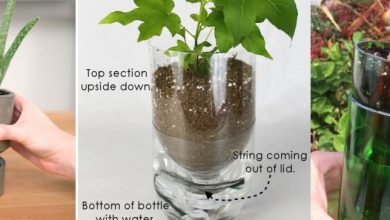What is the best substrate? Types of substrates for garden plants
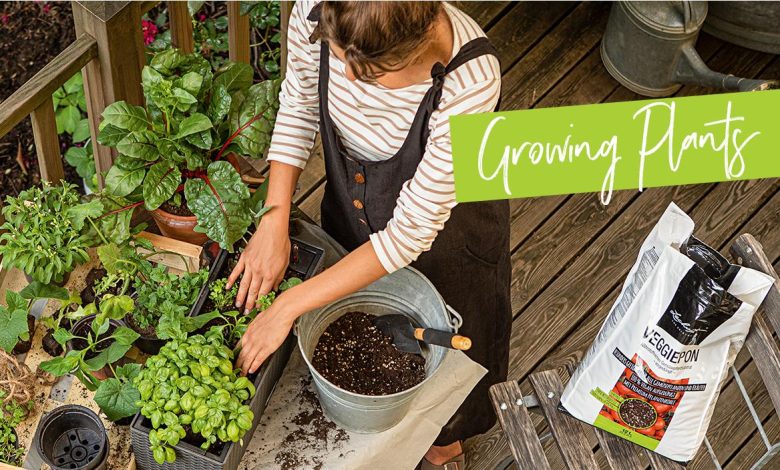
In this week’s post we will talk about the types of substrate for the orchard and the garden. Knowing which is the best substrate to grow is very important and the harvest of our garden will largely depend on it.

A good farmland on which the roots settle is a fundamental aspect for the development of plants, since from it they obtain the nutrients and water they need to grow and bear fruit.
As we will see, there are different types of potting soils, both organic and inorganic substrates. They are chemically active materials or inert materials that we can combine in many ways to obtain our ideal substrate.
What is the culture substrate and main characteristics
The substrate or farmland is the solid material (natural, synthetic or residual; mineral or organic; pure or in the form of a mixture) that acts as a physical support for the plants (by allowing the roots to anchor), and as a support biological and chemical in which nutrients, water, air and microorganisms coexist.
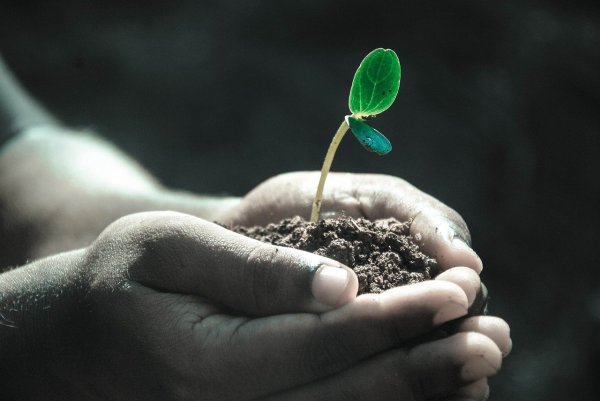
The main characteristics of the substrate that influence plant growth are: porosity and texture (sandy, silty or clayey), acidity or pH, and the presence of nutrients. If any of these characteristics fails (very acid soil, very compacted, «exhausted» soil or without nutrients…) it is very possible that the plants will not develop well, so it will be necessary to add materials to improve the soil (we will see it in the last section of the post).
In the case of growing in pots and other containers, it is important to know the different types of substrates with which we can fill our containers, so that we use the most suitable ones.
☝ What is the best substrate for the garden?
The usual thing in gardens for beginners is to use what is known as “universal substrate”. This is usually a mixture of organic substrate (usually peat) with inorganic substrates such as perlite or vermiculite, which increase porosity.
Currently peat is the most used material as a component for substrates. It is a fossil material that comes from peat bogs (wetlands with accumulations of Sphagnum moss), in which biodiversity and conditions of high water saturation, low oxygen levels and high acidity, result in the formation of this organic substrate..
Despite its advantages for the cultivation of vegetables and garden plants (high organic matter content, good porosity, slow release of nutrients…), the use of peat has negative aspects such as its high price, the depletion of reserves (it is a non-renewable resource) or the environmental impact of its extraction, so it would be interesting to start replacing it with other organic substrates such as composted waste.

If, instead of using a universal substrate, we want to create our own substrate for pots and other containers in the flowerpot, we will only have to make a combination of the different types of organic and inorganic substrates.
There is no single ideal substrate, and there can be several types of substrates for the garden that we can create with the different materials or components of the substrate.
Some examples of substrates for horticultural are the following mixtures:
- Compost and coconut fiber
- peat and perlite
- manure and river sand
- Worm humus, perlite and vermiculite
- Peat, vermiculite, tezontle
The choice will depend on the type of crop. Although most vegetables would do well in all of these potting media, there are those that prefer ‘soft’ soils with many pores through which they can expand, such as roots and tubers; and others, such as tall crops, which need more stable substrates.
Types of organic substrates
- Peat
- Manure
- Compost
- Earthworm humus
- Mulch or forest soil
- Sawdust or wood chips
- Pine bark
- Coconut fiber
- rice husk
Types of inorganic substrates
- perlite
- rock wool
- gravel
- River sand
- volcanic soil or tezontle
- expanded clay
- vermiculite
Substrates for hydroponics
Hydroponic substrates are used for the novel «soilless cultivation» or hydroponic cultivation. In hydroponics, the plants do not sit on a fertile substrate or farmland, but the nutrients or fertilizers are dissolved in the water that continuously bathes the roots of the plants.
The hydroponic substrate only serves as a base for the roots to support the plant, so it does not need to contain organic matter and inert substrates such as perlite, cotton, rock wool or expanded clay are usually used.
Hydroponic or soilless cultivation is very widespread, especially in large-scale intensive cultivation, such as greenhouse horticulture. (More information in the post about types of hydroponic substrates).
✅ How to improve the different types of substrates
To improve the substrate we can add different types of organic or inorganic materials. Depending on the problems or deficiencies that our substrate has, we will take some soil correction measures or others.
How to improve sandy soil that dries out too quickly
If the substrate retains little water and dries quickly, it is because it is sandy and drains the water too quickly after irrigation.
To improve sandy soils and increase water retention, organic substrates and those with finer particles should be added. These types of substrates will compensate for the coarse granulometry and the low water retention of the sands. It is best to add compost, manure or earthworm humus.
In addition, to prevent the soil from drying out too much and retaining moisture (especially when temperatures are high) it is highly recommended to cover the soil with a layer of mulching or organic mulch for gardens.
Increase porosity to improve clay or compacted soils
If the soil has little aeration and is very compacted (as is the case with clay soils or heavy soils), we must use materials to improve the porosity of the substrate.
Substrates to improve clay soils:
- Compost
- gravels and sands
- perlite
- vermiculite
- volcanic land
- expanded clay
- Pine bark
Also, if the soil is slightly acidic, lime can be added to the substrate to improve heavy soils (not recommended on basic or alkaline soils because the pH would rise too much).
Fertilizers to improve poor soils
The best thing for the plants in the garden is to fertilize the soil with natural fertilizers. These organic substrates, in addition to providing nutrients, improve the structure and texture of the soil.
One of the best organic fertilizers, compost, can be made in the garden itself thanks to the vegetable waste generated, although it is also easy to find in any garden store or other specialized stores.
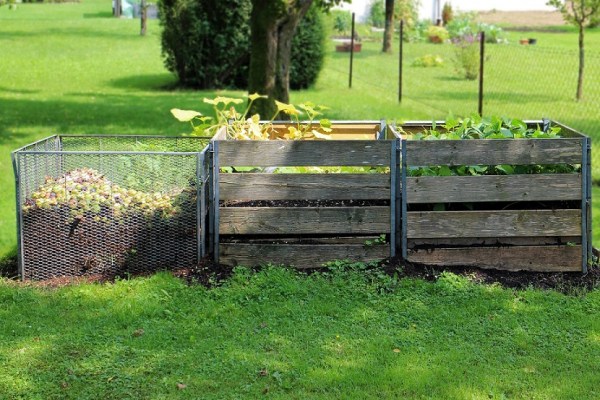
In addition to compost, soil fertility can be improved with other ecological fertilizers such as manure, earthworm humus or green manures (which are small legumes, such as clovers, that are grown and then uprooted and buried, providing organic matter to the substratum).
In the post about types of organic fertilizer you can find more details about these and other ways to improve the soil with fertilizers.
How to improve acid soils
In general, the optimal pH for garden plants is slightly acidic or neutral (pH 5.5 to 7). There are species that prefer acid soils, such as blueberries, strawberries, green beans or tomatoes; and other crops that grow better with slightly alkaline soils, such as lettuce, asparagus or onion.
Improving acidic soils or soils with a pH that is too low is simple: we only need to add substrates or components with a basic pH (liming substances) that counteract the acidity.
The most used to improve acid soils are calcareous amendments (with calcium) such as agricultural lime or calcite (calcium carbonate), but there are also other alkalizing substances such as dolomites, ground shells or magnesium oxide.
The amount and frequency of application of whiteners for acid soils depends on several factors: type of substance (whether it is just lime or other elements are added), type of crop (each plant has a pH at which it develops better), previous state from the ground etc.
These are just a few important things about potting soils and improving garden soil, but there are many more… (Here are some helpful references on types of soils and how to improve them.)
References
- Masaguer, A., 2004. What substrate to choose? HORTICULTURE Magazine, No. 201, p. 40-42.
- Masaguer, A., 2005. Culture substrates: a new eco-compatible alternative. PHYTOMA, no. 169.
- Cruz-Crespo, E. et al., 2013. Substrates in horticulture. Bioscience Magazine, vol. 2 (2), p. 17-26.
- San Martín, D., 2014. How to improve the pH of acidic soils. The Mercury (March 12, 2014).
- Castro, H. & Munevar, O., 2013. Chemical improvement of acid soils through the use of liming materials. UDCA Magazine News & Scientific Dissemination, vol. 16 (2), p. 409-416.
Feel free to participate in the comments below if you want to tell us about other tricks to improve the soil in your garden or have questions about how to get the ideal substrate or how to correct problem soils.

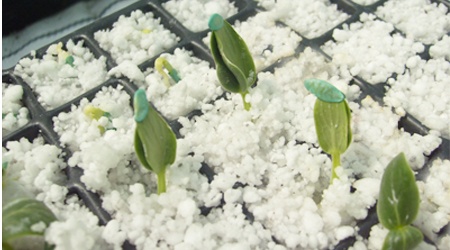

![Photo of Lilo Cuttings in Water: [Associations, Best Time and Sowing]](https://www.complete-gardening.com/wp-content/uploads/2022/08/lilo-cuttings-in-water-associations-best-time-and-sowing-390x220.png)
![Photo of Kiwi Care: [Soil, Humidity, Pruning and Problems]](https://www.complete-gardening.com/wp-content/uploads/2022/08/kiwi-care-soil-humidity-pruning-and-problems-390x220.jpg)
![Photo of Echeveria: [Cultivation, Irrigation, Associations, Pests and Diseases]](https://www.complete-gardening.com/wp-content/uploads/2022/08/echeveria-cultivation-irrigation-associations-pests-and-diseases-390x220.jpg)
